 Facebook
Facebook
 X
X
 Instagram
Instagram
 TikTok
TikTok
 Youtube
Youtube
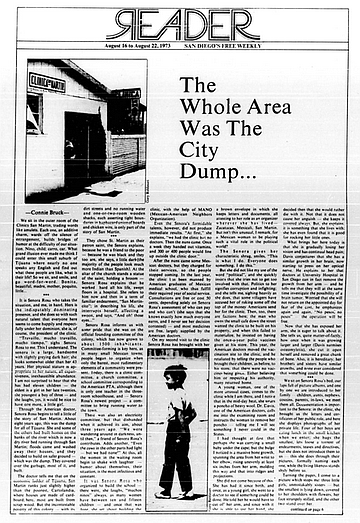
They chose St. Martin as their patron saint, the señora explains, because he was a friend of to the poor — because he was black and they too are, she says, a little dark. At the altar of the church stands a statue of the saint, holding a broom — Señora Rosa explains that he worked hard all of his life, swept floors in a hospital. She refers to him now and then in a term of familiar endearment, "San Martincito."
By Connie Bruck, August 16, 1973 | Read full article
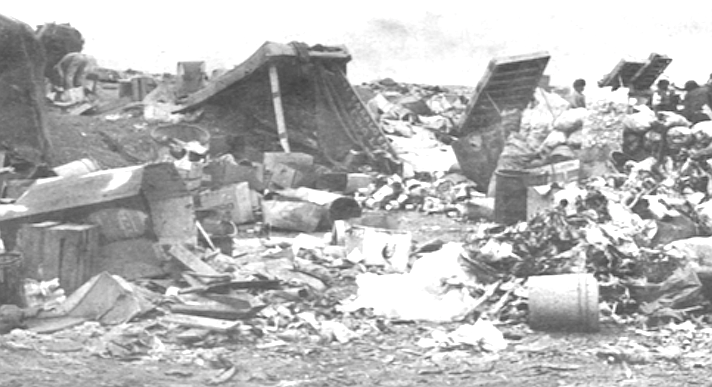
Erlinda was embroiled in an unexplained feud with one of Serrano’s kin. He did not know what had started the fight. One day Erlinda appeared at his door, demanding money — 568 pesos. Serrano didn’t have it, and he told her so. She would not leave and became abusive, threatening him and his family. He physically ejected her from his plot of land, and she stood outside his little wood fence and put a curse on him.
By Luis Urrea, November 15, 1990 | Read full article
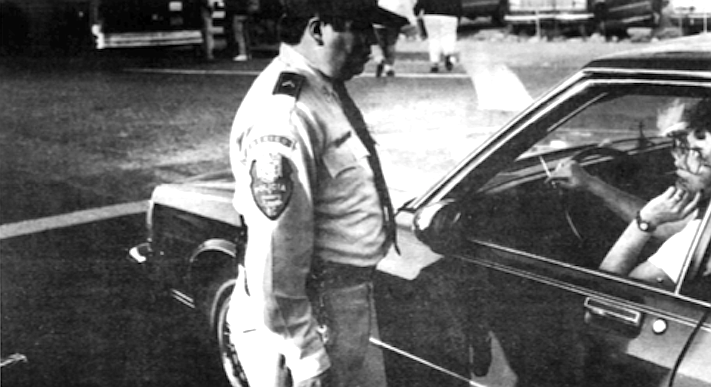
Although there were surely no flies in the hospital, they remain my overwhelming impress of the place. I imagine big-assed flies bumping into everything. Certainly, the scene was like something out of a David Lynch movie — dust and dirt forming small wedges in the comers, dirty bandages visible on the floors of rooms standing empty, middle-aged women lying on stretchers in the hall obviously suffering from something that was not readily visible.
By Luis Urrea, November 21, 1991 | Read full article
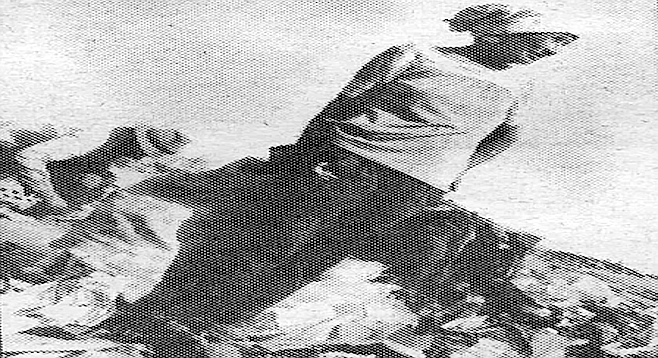
They came up with.the money to buy Elijio a small suit. Some of the Mixtec men collected raw particle-board and hammered together a coffin. They set it inside the dirt-floor shack where the gringos had been bathing the kids. The wife of one of the Mixtecs took Jorge and Carlos in among her own brood. She had given birth to her last child in this same shack, cutting the umbilical cord herself with a steak knife.
By Luis Urrea, November 25, 1992 | Read full article
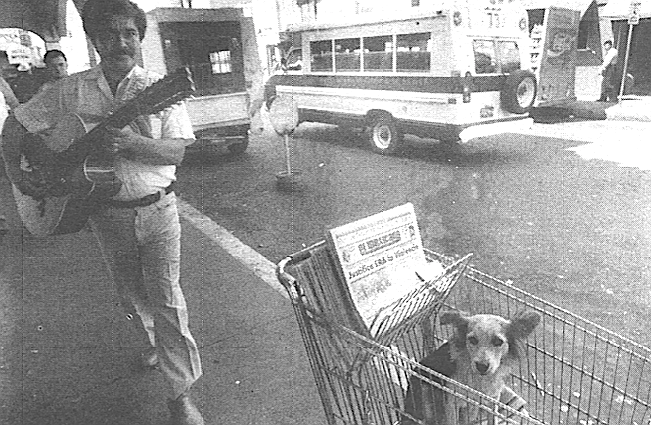
For most of the ’20s and ’30s, the Foreign Club Cafe was the mecca for San Diego’s “smart set.” The Foreign Club opened in 1924 and was advertised as “quaint Tijuana’s rendezvous for devotees of dining, dancing, and diversions.” It was in this club that chubby young Margarita Carmen Dolores Cansino (later to be renamed Rita Hayworth) first danced in shows with her Spanish father Eduardo before she was discovered by Hollywood.
By Alexander Theroux, February 1, 1996 | Read full article
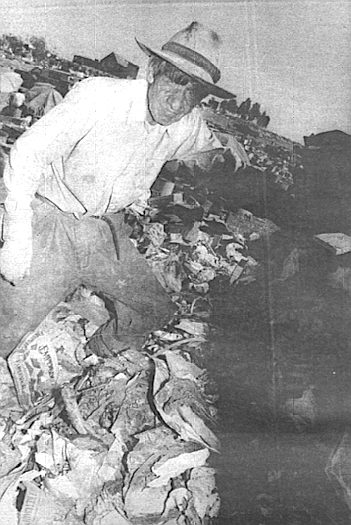
Juanita and Perla hurry along, trying to beat the sharks. These sharks are outsiders, women who come from miles away, walking hours, to get some of the American goods. There are often fistfights between locals and sharks, the women rolling around on the ground in deadly clutches, choking and punching as they roll, while their friends and neighbors laugh and taunt them and occasionally kick them.
By Luis Urrea, April 4, 1996 | Read full article
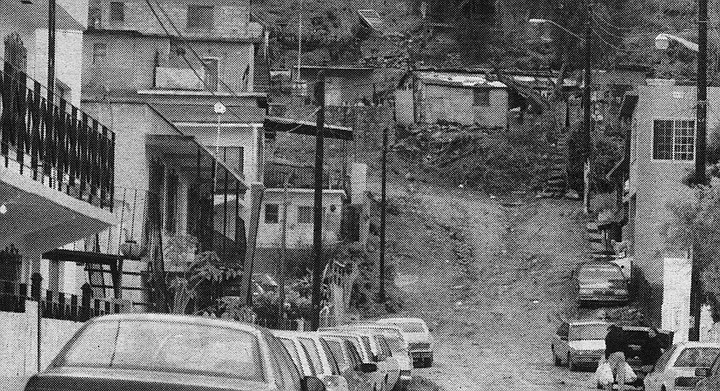
Antonio was in the living room with his mother and was about to step outside when the water, sounding like a train, came crashing through the front of the house and quickly filled it. The water rose to the roof. At the instant Antonio heard the roar he wrapped his arm beneath his mother’s arm and across her chest. The water swept them into the bedroom, and with his right hand he grabbed his father.
By Emmanuel Burgin, March 5, 1998 | Read full article

"Once, a guy, a drunk guy took my taxi from downtown. He wanted to go to this particular colonia, this neighborhood. It was raining, I remember. When I got there, I charged him the rate. He said, ‘I already paid.’ We started to argue and he had a gun. I said, ‘All right, forget it,’ and he put the gun away. I surprised him then and took the gun away. That was it."
By John Brizzolara, April 1, 1999 | Read full article
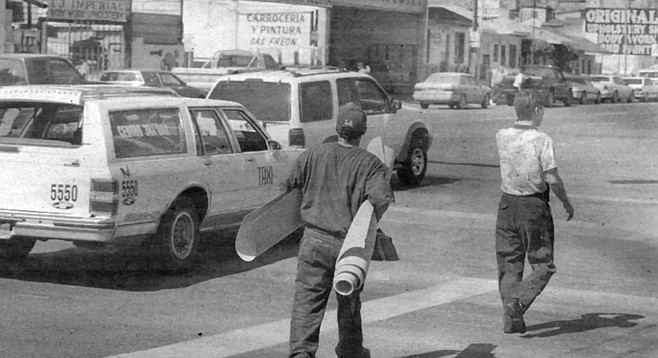
The shop that hired him was S&S Pan American, well known in the golden age of Tijuana upholstery, which thrived from the 1930s through the early ’80s, when the city closed the bridge that brought traffic directly into the downtown district. “At the entrance to the bridge, were the sales offices for a whole handful of shops — S&S Pan American, M&M, Ricky’s, Thunderbird. These shops are still here in Tijuana, but it’s not the same people anymore.”
By Bob Owens, August 30, 2001 |Read full article
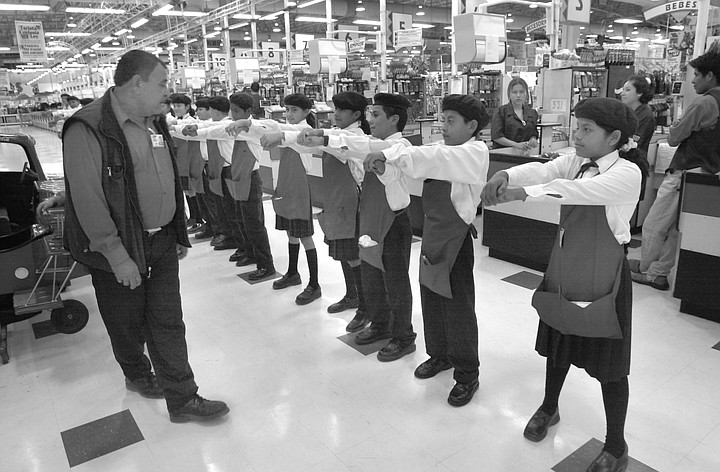
Six mornings a week, Delgado takes a five-peso taxi ride from his home a couple of miles away to start work on time at 8:00 a.m. He works until noon, then returns home for lunch before heading to school. The four-hour shift is the maximum allowed by DIF. How much money he makes in one shift, he says, "depends a lot on the day. I average about 40 pesos [about $4.50] a day."
By Ernie Grimm, July 18, 2002 | Read full article

They didn't want to give me the whole technique all at once. It was good in the end because we learned to invent our own style of flowers. When I first started, this was the only kind of flower we used to make." From a bundle next to her, she pulls out what looks like a hot pink hibiscus blossom about eight inches in diameter. "We call these flores Mexicanas. Then my husband invented this other style, which looks more like real petals."
By Ernie Grimm, December 12, 2002 | Read full article

Roughly 53,000 cars that the city of Tijuana, through its towing concessionaires, has impounded over the years sit in huge yards on the periphery of the city — near the Rodriguez dam southeast of the city and in the submunicipality of La Gloria south of the city. A smaller number rust away in one- and two-acre lots wedged into the middle of the city. Jalopies abandoned after wrecks and breakdowns make up a significant percentage
By Ernie Grimm, June 10, 2004 | Read full article

"Right now," says Javier Larios Castañeda, superintendent of the zone, "we have something like 50,000 illegal connections, despite the fact that we are constantly performing operations to take away these connections. As soon as we finish disconnecting the wires, the people are out there climbing the power poles, connecting new lines, and rolling the wire to wherever their houses are."
By Ernie Grimm, January 27, 2005 | Read full article


They chose St. Martin as their patron saint, the señora explains, because he was a friend of to the poor — because he was black and they too are, she says, a little dark. At the altar of the church stands a statue of the saint, holding a broom — Señora Rosa explains that he worked hard all of his life, swept floors in a hospital. She refers to him now and then in a term of familiar endearment, "San Martincito."
By Connie Bruck, August 16, 1973 | Read full article

Erlinda was embroiled in an unexplained feud with one of Serrano’s kin. He did not know what had started the fight. One day Erlinda appeared at his door, demanding money — 568 pesos. Serrano didn’t have it, and he told her so. She would not leave and became abusive, threatening him and his family. He physically ejected her from his plot of land, and she stood outside his little wood fence and put a curse on him.
By Luis Urrea, November 15, 1990 | Read full article

Although there were surely no flies in the hospital, they remain my overwhelming impress of the place. I imagine big-assed flies bumping into everything. Certainly, the scene was like something out of a David Lynch movie — dust and dirt forming small wedges in the comers, dirty bandages visible on the floors of rooms standing empty, middle-aged women lying on stretchers in the hall obviously suffering from something that was not readily visible.
By Luis Urrea, November 21, 1991 | Read full article

They came up with.the money to buy Elijio a small suit. Some of the Mixtec men collected raw particle-board and hammered together a coffin. They set it inside the dirt-floor shack where the gringos had been bathing the kids. The wife of one of the Mixtecs took Jorge and Carlos in among her own brood. She had given birth to her last child in this same shack, cutting the umbilical cord herself with a steak knife.
By Luis Urrea, November 25, 1992 | Read full article

For most of the ’20s and ’30s, the Foreign Club Cafe was the mecca for San Diego’s “smart set.” The Foreign Club opened in 1924 and was advertised as “quaint Tijuana’s rendezvous for devotees of dining, dancing, and diversions.” It was in this club that chubby young Margarita Carmen Dolores Cansino (later to be renamed Rita Hayworth) first danced in shows with her Spanish father Eduardo before she was discovered by Hollywood.
By Alexander Theroux, February 1, 1996 | Read full article

Juanita and Perla hurry along, trying to beat the sharks. These sharks are outsiders, women who come from miles away, walking hours, to get some of the American goods. There are often fistfights between locals and sharks, the women rolling around on the ground in deadly clutches, choking and punching as they roll, while their friends and neighbors laugh and taunt them and occasionally kick them.
By Luis Urrea, April 4, 1996 | Read full article

Antonio was in the living room with his mother and was about to step outside when the water, sounding like a train, came crashing through the front of the house and quickly filled it. The water rose to the roof. At the instant Antonio heard the roar he wrapped his arm beneath his mother’s arm and across her chest. The water swept them into the bedroom, and with his right hand he grabbed his father.
By Emmanuel Burgin, March 5, 1998 | Read full article

"Once, a guy, a drunk guy took my taxi from downtown. He wanted to go to this particular colonia, this neighborhood. It was raining, I remember. When I got there, I charged him the rate. He said, ‘I already paid.’ We started to argue and he had a gun. I said, ‘All right, forget it,’ and he put the gun away. I surprised him then and took the gun away. That was it."
By John Brizzolara, April 1, 1999 | Read full article

The shop that hired him was S&S Pan American, well known in the golden age of Tijuana upholstery, which thrived from the 1930s through the early ’80s, when the city closed the bridge that brought traffic directly into the downtown district. “At the entrance to the bridge, were the sales offices for a whole handful of shops — S&S Pan American, M&M, Ricky’s, Thunderbird. These shops are still here in Tijuana, but it’s not the same people anymore.”
By Bob Owens, August 30, 2001 |Read full article

Six mornings a week, Delgado takes a five-peso taxi ride from his home a couple of miles away to start work on time at 8:00 a.m. He works until noon, then returns home for lunch before heading to school. The four-hour shift is the maximum allowed by DIF. How much money he makes in one shift, he says, "depends a lot on the day. I average about 40 pesos [about $4.50] a day."
By Ernie Grimm, July 18, 2002 | Read full article

They didn't want to give me the whole technique all at once. It was good in the end because we learned to invent our own style of flowers. When I first started, this was the only kind of flower we used to make." From a bundle next to her, she pulls out what looks like a hot pink hibiscus blossom about eight inches in diameter. "We call these flores Mexicanas. Then my husband invented this other style, which looks more like real petals."
By Ernie Grimm, December 12, 2002 | Read full article

Roughly 53,000 cars that the city of Tijuana, through its towing concessionaires, has impounded over the years sit in huge yards on the periphery of the city — near the Rodriguez dam southeast of the city and in the submunicipality of La Gloria south of the city. A smaller number rust away in one- and two-acre lots wedged into the middle of the city. Jalopies abandoned after wrecks and breakdowns make up a significant percentage
By Ernie Grimm, June 10, 2004 | Read full article

"Right now," says Javier Larios Castañeda, superintendent of the zone, "we have something like 50,000 illegal connections, despite the fact that we are constantly performing operations to take away these connections. As soon as we finish disconnecting the wires, the people are out there climbing the power poles, connecting new lines, and rolling the wire to wherever their houses are."
By Ernie Grimm, January 27, 2005 | Read full article
Comments